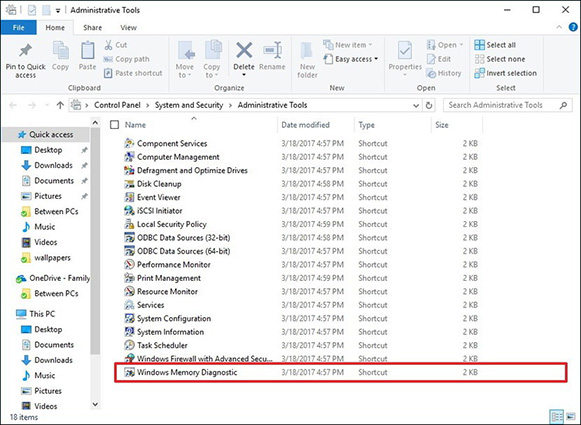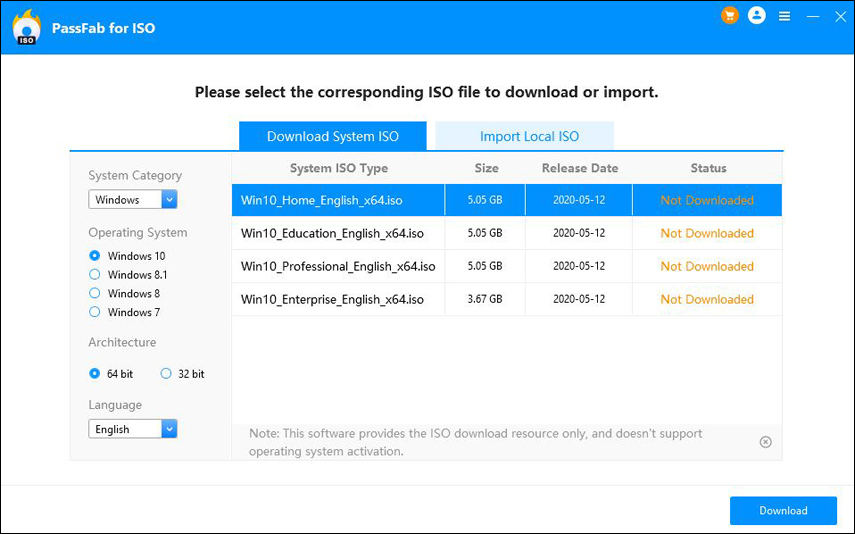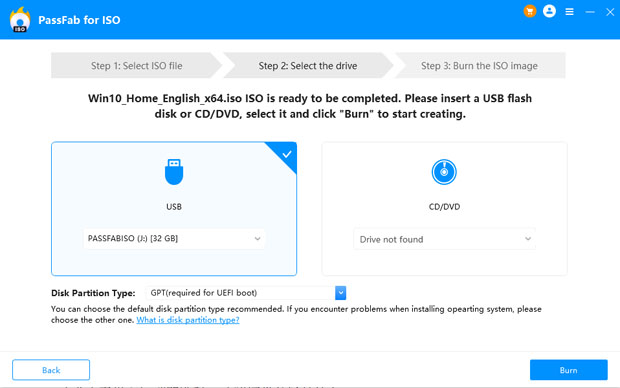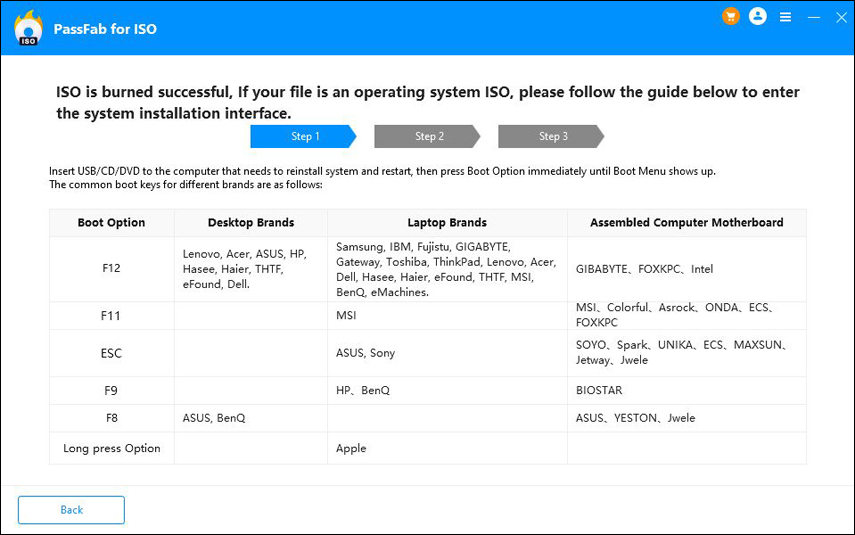Have you encountered a Blue Screen of Death error screen with stop code KERNEL SECURITY CHECK FAILURE, while booting Windows 10? This is a frequent problem and today we are going to discuss Windows stop code kernel security check failure in detail.
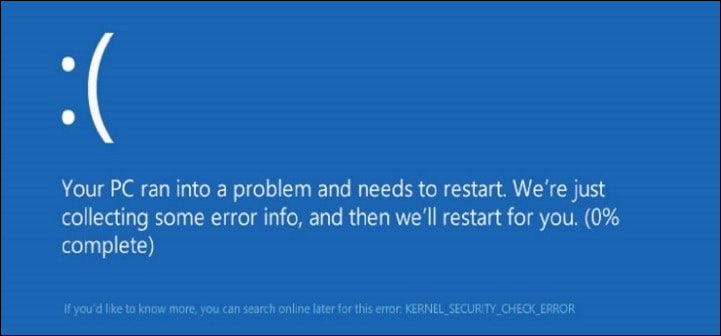
Part 1: What Cause Kernel Security Check Failure
The common cause of Kernel Security Check Failure Windows 10 is non-compatible or outdated drivers when you upgrade Windows to a newer version. Because of outdated drivers one or several files fail the integrity or compatible check, hence the error. However, this is only one cause of this frustrating error. Other probable causes can be:
- Software conflicts
- Virus attacks
- Corrupt system files
- Hardware issues especially hard drive problems
- Memory problems
Part 2: 8 Methods to Fix Kernel Security Check Failure Windows 10
As we saw, there can be several reasons for Windows 10 Kernel Security Check Failure; therefore, there are different methods to recover from this error. The success of every solution depends on the cause of the problem.
- 1. Check System Files
- 2. Check Memory Problems
- 3. Check Hard Drives
- 4. Start Windows in Safe Mode
- 5. Update Hardware Driver
- 6. Uninstall incompatible Software
- 7. Reinstall Windows Operating System
- 8. Run System Restore
1. Check System Files
Windows 10 has a built-in tool for system file diagnostics and it is called the System File Checker (SFC) tool. To use this tool to check the integrity of system files and to fix Windows 10 Kernel Security Check Failure, follow this guide.
- Run command prompt as Administrator. For this, search for“cmd” in the search bar of the Start button. Right-click on cmd.exe and click Run as Administrator.
- In the command prompt, write SFC /scannow and hit enter.
- System File Checker will start scanning system files for integrity.
2. Check Memory Problems
Windows stop code kernel security check failure may show because of the memory problems sometimes. Fortunately, Windows has a built-in diagnostic tool for checking memory problems. To launch the memory diagnostic tool, follow these steps.
- Go to Control Panel>System and Security>Administrative tools.
Double click the Windows Memory Diagnostic tool.

- Click Restart now and check the problems option. Your computer will reboot and will automatically run all memory scans.
- During the scans, you can press F1 key and change the scan settings.
3. Check Hard Drives
Corrupt hard drives can also cause stop code KERNEL SECURITY CHECK FAILURE. You should check if the hard drives are plugged in correctly. Also, try changing the hard drives with any spare disk to see if the problem persists.
Chkdsk utility is also used to check the drive errors. To use this utility,
- Start Command Prompt as administrator.
- Run the chkdsk C: /f command. Replace ‘C’ with the letter of your hard drive partition.
- /f command detects and repairs logical issues while /r repairs physical issues as well. Make sure to run the command with both options.
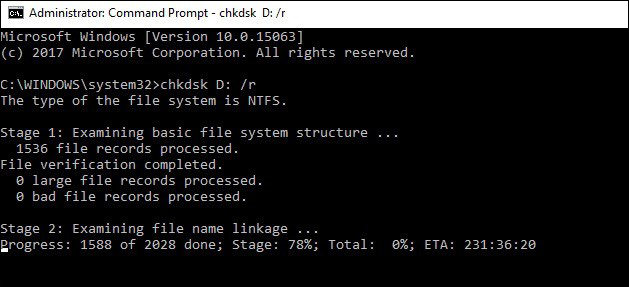
4. Start Windows in Safe Mode
Rebooting Windows allows you to find out if any application or software is causing Kernel Security Check Failure. It is like a bare minimum Windows run. If you do not encounter the error in safe mode, it means any program or software is the culprit. Enable your programs one at a time to identify the cause.
To use this option follow the given steps.
- Click the Start button.
- Go to Settings>Updates & Security. Click the Recovery link from the left pane.
- Click Restart now from Advanced startup.
- Troubleshoot from the choose an option screen.
- Go to Advanced options >Startup Settings>Restart.
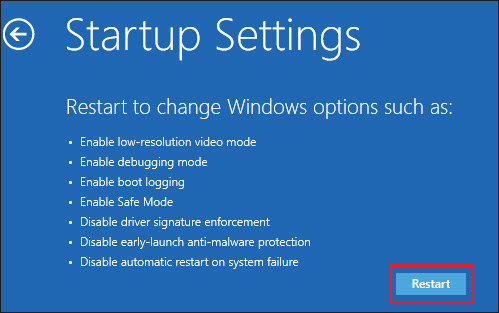
5. Update Hardware Driver
To update hardware drivers, you need to know if any drivers have gone incompatible with the recent version of Windows you are using. Follow this guide to run this fix.
- Search ‘Verifier’ in the start button and run this program as Administrator.
- In the program windows, select “Create Standard Settings” and click next.
- Select “Automatically select drivers build for older versions of Windows,” and click “Next.”
- In the next window, you should see a list of drivers. Write them down. Now close the program and do not attempt to verify, as this needs a professional.
- Now go to ‘Device Manager’ and update the drivers you have in your written down list. One by one update the drivers and reboot your system to see if the Windows stop code Kernel Security Check Failure is fixed.
6. Uninstall incompatible Software
If you suspect that a recent installation of any software is the reason for stop code kernel security check failure then uninstalling the program is a quick fix. Also, if you have upgraded your Windows version, some software may have gone incompatible with the operating system. To uninstall any suspected software, go to the control panel>Programs>Uninstall a program. Search for the program and click uninstall.
Reboot your system to check if the problem is fixed.
7. Reinstall Windows Operating System
Ow, if you have tried all the remedies and nothing worked then this is the time to reinstall Windows operating system. Reinstallation of Windows may look like a daunting task so we recommend using PassFab for ISO program for this task. It is a simple, time saving and efficient method to reinstall Windows.
Here is a quick guide to reinstall Windows using PassFab for ISO.
- Download PassFab for ISO from the official site and install it.
Choose ISO file to make bootable USB or DVD.

Select the device(CD/USB) you want to make bootable for installation. This device should be empty. Otherwise, back up data in your device because PassFab will format the drive and erase all existing contents.

PassFab will start burning the ISO on your device. Expect a waiting time in this process.

- Now, you can insert the USB to your computer and boot from it. Follow the wizard for a clean Windows 10 installation.
8. Run System Restore
System Restore is a handy option if the Windows stop code Kernel Security Check Failure started after an application installation. This option can be run from Settings>Update & Security>Recovery link. You will see the Get Started link under the ‘Reset This PC’ heading. Choose ‘Keep My Files’ in the pop-up.
If the stop code kernel Security Check Failure appeared recently, chances are that System Restore will recover your Windows.
Read Also: 2025 Fixed: 7 Solutions to There Was A Problem Resetting Your PC
Summary
Windows 10 Kernel Security Check Failure may appear for several reasons. You should try the solution depending on the cause. Nonetheless, if nothing works then a clean installation using the PassFab for ISO program is the last option. PassFab for ISO is a professional solution that is simple enough for even a novice to use.
